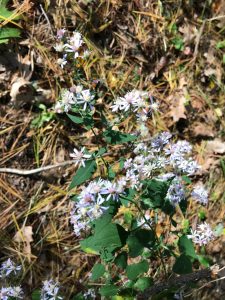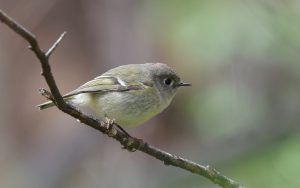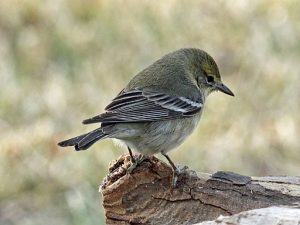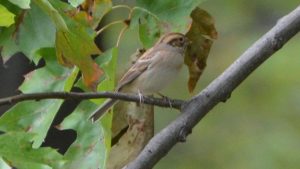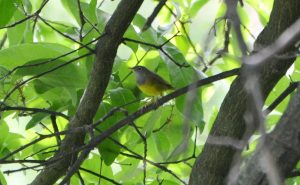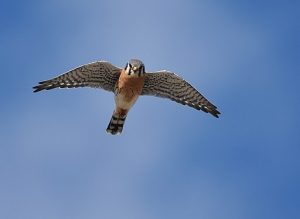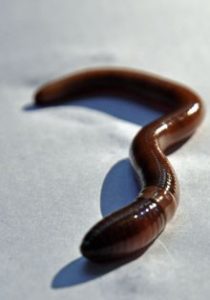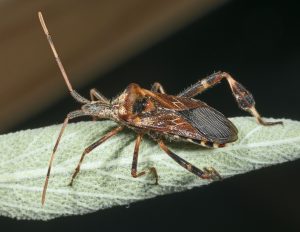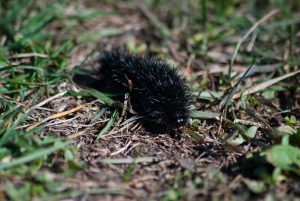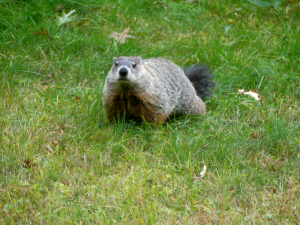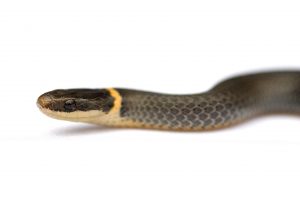Written by Gwyn Loud for the Lincoln Land Conservation Trust. She welcomes your sightings and questions and pictures at 781-259-8690 or at gwynloud555 at gmail.com.
The past month has seen great fluctuations in temperatures, with unusual heat (upper 80s) on the first day of fall, and patches of killing frost in low-lying areas on Oct. 3-4. Foliage on trees is just starting to turn color; it seems late this year. Most wildflowers have finished blooming, but several species of aster are still in flower. This is a time when wild foods such as seeds and berries are abundant, which may account for fewer birds at your feeders so far. As Tia Pinney, naturalist at Drumlin Farm, said in her recent talk on bird feeding, even when we feed the birds they never lose their ability to find wild food. We feed them largely for our own enjoyment! If we feed the birds, however, it is important to be consistent in filling the feeders, especially during harsh winter months. And don’t forget water, which they need year-round.
The recent news about the sharp decline in birds, reported widely in the press, is sad and worrisome. The number of birds in the United States and Canada has declined by 3 billion, or 29 percent, over the past half-century, according to research published in the journal Science . Those of us who remember the spring “dawn chorus” know how few birds are in the chorus compared to a few decades ago. The causes are multiple and we can each do our part to help stem the trend, whether we are farming, managing conservation lands, or creating backyard gardens. Avoiding pesticides, keeping cats indoors, putting up bird houses, delaying mowing, planting bird-friendly shrubs and trees, and leaving weedy places, hedgerows, and dead tree snags are just a few ways we can help.
Fall migrants continue to pass through, including flocks of common grackles and American robins, and small numbers of warblers such as Northern parula, black-throated green, common yellowthroat, pine, and yellow-rumped. Connecticut warblers, infrequently seen, were spotted in two locations. Among the migrating birds spotted in or flying over Drumlin Farm’s varied habitats were indigo buntings, double-crested cormorants (a flock of 130!), chimney swifts, broad-winged hawks, gray catbirds, bobolinks, red-eyed and blue-headed vireos, many Eastern phoebes, common loons, and a single ruby-crowned kinglet, immature scarlet tanager, osprey, merlin, American kestrel, and yellow-bellied sapsucker.
October is sparrow month: white-throated, white-crowned, savannah, song, swamp, chipping, and clay-colored have all been reported. An early dark-eyed junco turned up, soon to be joined by others which will be welcome winter diners at our feeders. Eastern bluebirds are here, some to stay for the winter and others to head south.
Common ravens continue to be seen more frequently each year, sometimes only detected by their harsh rasping “caw caw”. One observer wrote, “A common raven was seen going after a red-tailed hawk. The raven was definitely the one in charge.” Owls have been calling a lot too, both barred and great-horned. Owl enthusiasts are urged to attend an LLCT program “Eyes on Owls”, with live owls, at Bemis Hall at 3PM on Sunday Nov. 10.
For the first time I had reports of the invasive crazy jumping worms, also called snake worms, from Tia Pinney at Drumlin Farm. They look much like our “regular” European earthworms but have a smooth white clitellum (band) near the head. As Tia says, “The major issue is that they are so voracious and consume the forest floor litter at such a rate that they will drive out other detrivores and decomposers and destroy the ground cover species – plants, insects, fungi, etc. – that need the leaf litter.” For more information on identifying them and what to do, check out these resources.
A number of butterflies, including painted lady, American lady, viceroy, and monarch were seen on flowers as long as we had warm weather. One observer found a large caterpillar with black bristles, the larva of a giant leopard moth and I have seen more woolly bear caterpillars than usual. Praying mantises have been seen, and a resident reported a northern walking stick, superbly camouflaged by its resemblance to a stick. A “beautiful wolf spider with probably a hundred hatched-out spiderlings on her back” was spotted. Crickets and katydids continued to sing until cold temperatures arrived; local naturalist Norman Levey identified lesser angle-wing katydids, a more southern species which is moving north with changing climate.
A few insects may be appearing in homes as cold weather arrives. One of these is the western conifer seed bug. To quote my column from 2010, “This is a true bug, about ¾ inch long and brownish on top. They were once confined to the western USA but were found in Pennsylvania in 1992 and have been extending their range. At various stages they feed on the cones, cone scales, seeds and needles of conifers and, when cold weather sets in, they search for protective over-wintering sites, which may include your house! They do no damage and do not bite or sting, but they may give off a bad smell. When spring comes they will make their way back outdoors. “Similarly, stink bugs, brown and shield-shaped, may be your new roommates. They too are harmless and provide good cat entertainment; just pick them up and toss them outdoors.
Other recent animals sighted include a fisher in the Muster Field, many families of deer, woodchucks fattening up for winter hibernation, leopard frogs in several locations, and a few snakes. I found a small ring-necked snake in the basement, dead, alas. According to a publication from UMass Amherst, “Among all the New England snakes, ringnecks are most likely to end up in someone’s basement. Ringneck snakes rarely bite, but may release a foul musk when handled.”
Looking skyward, after nearly a year Venus will appear as an evening “star”, at first low in the west but climbing higher as we move into November.
© Gwyn Loud


